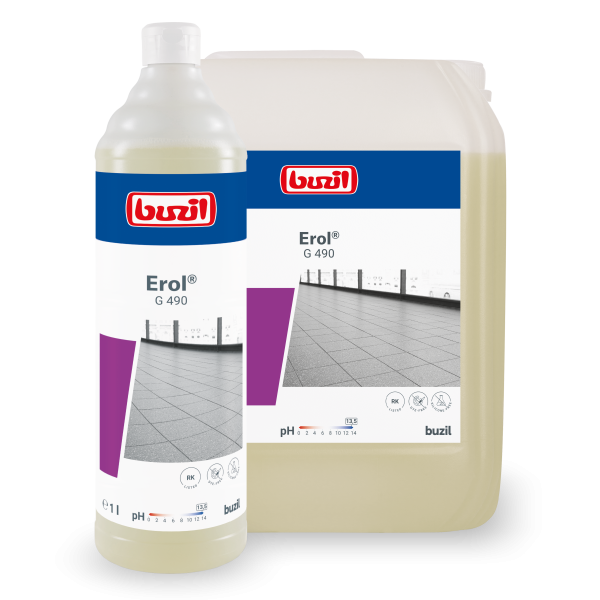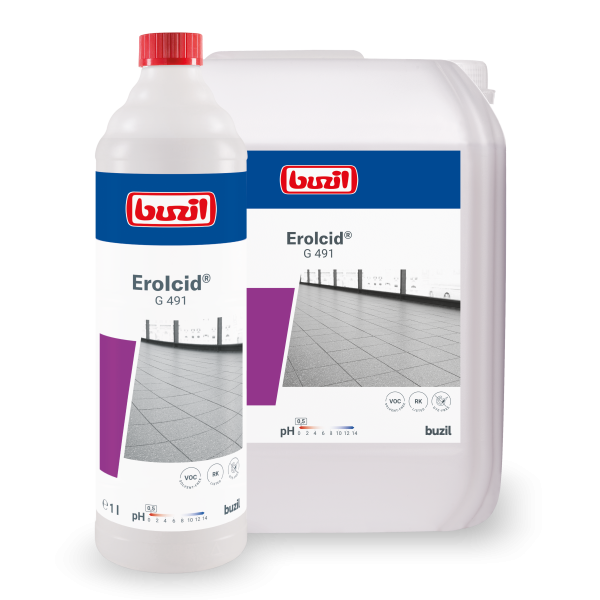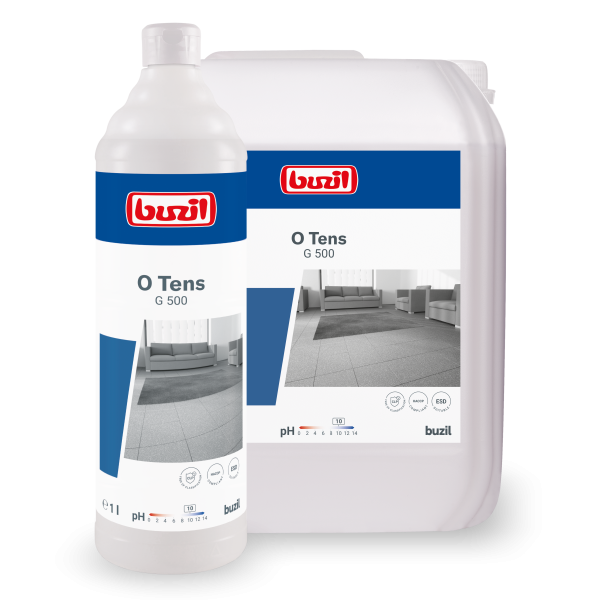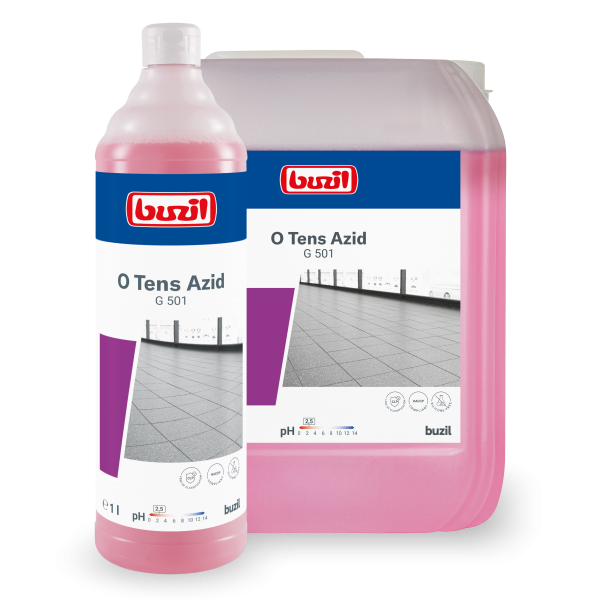Utilization
Soiling
-
Organic / inorganic contamination (grease, oil, protein, starch etc.)
Material compatibility
-
Sandstone
-
Stone carpeting
-
Clinker and terracotta
-
PVC safety flooring
-
Green sandstone | Anröchter stone
-
Safety tiles
-
Quartz vinyl
-
Porcelain stoneware tiles
-
Washed concrete
-
Cement and concrete screed
-
Quartzite
-
Gneiss
-
Slate
-
Granite
-
Basalt
-
Ceramic tiles
Product Information
- Spontaneous dirt-removing capacity with pore-deep cleaning effect
- Excellent wetting properties
- Low-foaming
- Can be used in the system with Erolcid® G 491
- RK-listed
- Suitable for use in cleaning machines
Area of application
- for microporous, fine-rough and alkaline-resistant surfaces, porcelain stoneware tiles and safety tiles
Application and dosage
- Always use cold water.
-
100 - 200 Millilitre / 10 liter Water
-
50 - 100 Millilitre / 10 liter Water
-
50 - 100 Millilitre / 10 liter Water
-
1000 - 3000 Millilitre / 10 liter Water
-
500 - 1000 Millilitre / 10 liter Water
- Apply fresh application solutions and consume them within 24 hours at the latest.
Note
- To improve the cleaning result, we recommend microfiber materials.
- Precipitation, which can occur due to cooling below room temperature, can be brought back into solution by slight heating and does not represent a quality defect.
- When used in the machine, the tanks should be cleaned and rinsed regularly.
- Changes or variations in colour of the product do not impact on the quality. The product image may differ in colour and shape from the original.
- Commercial use only
Tips and tricks
low / weak cleaning performance
choose an alkaline industrial cleaner, e.g. Indumaster® Offensive IR 47
Stripes and/or film on the surface, too much foam
Adjust product dosage
Surface damage (discoloration, swelling of material, etc.)
check chemical and water compatibility
Environmental Information
Proportion of easily degradable ingredients
99.9 %
Phosphorus content
7.5 mg/g
Palm oil-based raw materials - RSPO-certified share
contain no palm oil-based raw materials
The proportion of easily degradable ingredients refers to the proportion of organic ingredients that are defined as “easily biodegradable” according to OECD 301 or Detergent Regulation (EC) No. 648/2004. The value of the phosphorus content refers to elemental phosphorus. Palm oil is an important renewable source for the production of raw materials. The Roundtable on Sustainable Palm Oil (RSPO), founded in 2004, promotes sustainable cultivation methods for palm oil. This results in a certification system and the possibility of declaring raw materials as “RSPO-certified”.
Sales units
- G490-0001RA: 1 x 1 l bottle
- G490-0010RA: 1 x 10 l canister
- G490-0005RA: 1 x 5 l canister
Classification according to CLP
Danger marking
Danger
Hazard information
- H290: May be corrosive to metals.
- H314: Causes severe skin burns and eye damage.
Safety instructions
- P280: Wear protective gloves/protective clothing/eye protection/face protection.
- P303+P361+P353: IF ON SKIN (or hair): Take off immediately all contaminated clothing. Rinse skin with water or shower.
- P305+P351+P338: IF IN EYES: Rinse cautiously with water for several minutes. Remove contact lenses, if present and easy to do. Continue rinsing.
- P310: Immediately call a POISON CENTER/doctor.
Download area
- Operating instructions
- Safety Data Sheets
- Technical Data Sheets
- Environmental Information





